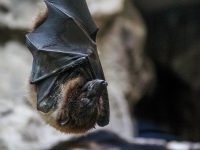
While 2020 was a year marked by the pandemic, 2021 began with the hope of vaccination. The starting shot was given as early as December 2020, with the priority strategy of immunising the most at-risk population groups as soon as possible.
After some stalemates and adjustments, the gradual immunisation of most of the population in more developed countries allowed, little by little, to recover certain areas of social, educational, and labour relations. This recovery, however, was not progressive, but fluctuated throughout the different waves, and now Europe, like other areas of the world, is in a process of returning to more restrictive measures to deal with omicron, the new variant of the virus.
In a world where health is interconnected, the limited availability of COVID-19 vaccines and the infrastructure to administer them in low- and middle-income countries is preventing the pandemic from coming to an end. While the richest countries receive third booster doses, much of the planet continues to do without the first one. This is and will be one of the key issues in the coming year: the need to reduce inequalities in the access to vaccines and treatments against COVID-19 if we want to have greater control over the spread of the virus.
This year has been full of information on the health crisis. Here is a selection of articles that have helped us to reflect on the pandemic in recent months.
Vaccines
The arrival of the first vaccines and mass immunisation did not put an end to the doubts and questions that have continued to arise throughout the year, and Mètode has attempted to answer them.
Can we still catch and spread COVID-19 even if we are vaccinated?
Maria Garcés-Sánchez, specialist in Paediatrics and researcher at the Vaccine Area of FISABIO, provided the answer.
Do people who have passed COVID-19 have more immunity than vaccinated people?
Vaccination confers greater protection against the main route of entry of the virus, said María Luísa Gil Herrero, professor in the Department of Microbiology and Ecology at the University of Valencia.
We have also seen that the vaccination strategy has adapted to the changing reality of the virus and its impact on different age groups. Thus, while at the beginning of the year the plan was not to vaccinate children, the year has ended with the inclusion of children aged 5 to 11 in the COVID-19 immunisation campaign. The same has happened with booster doses, which have recently begun to be administered to the general population in an effort to increase the immune response over time and in response to the appearance of new variants.
Variants
Although vaccination has been particularly helpful in preventing many severe COVID-19 cases, the gradual emergence of new variants, some of them more contagious, such as omicron in the last few weeks, has once again put health systems on edge.
Will variants continue to appear or will the options for mutational improvement of the coronavirus perhaps themselves? This idea emerged in the section «Invisible Monsters» (A peaking virus). If new variants appear, they will continue to be named after the letters of the Greek alphabet. This article explains it:
M. Alma Bracho, researcher at FISABIO, reviews the WHO recommendations for naming diseases and avoiding names that might be stigmatising for countries, communities or economic sectors.
The feared misinformation
A coronavirus and fake news pandemic
Although quality scientific journalism has made a genuine effort to keep up to date and report rigorously on the changing situation, disinformation and conspiracy theories have spread far and wide and have found great resonance on social networks. Esther Samper, Medical Doctor and disseminator and author of Si escuece, cura, took a look at this phenomenon.









